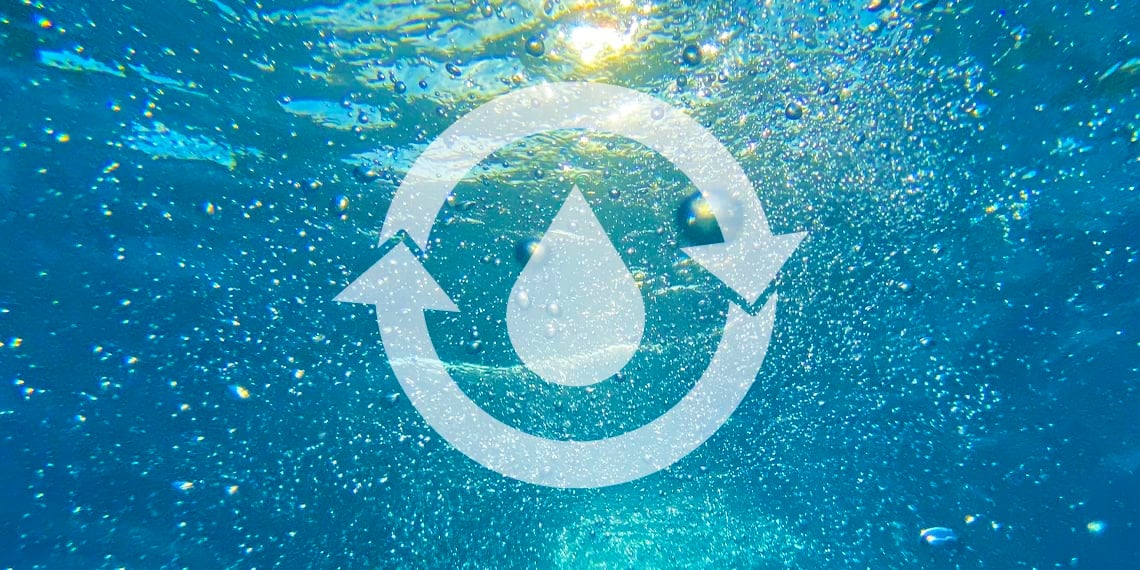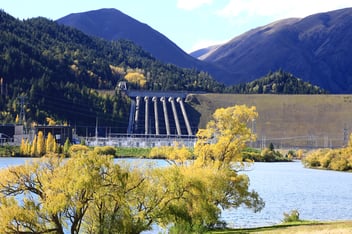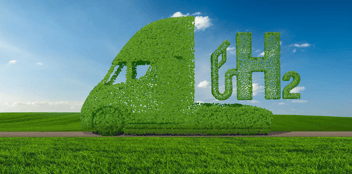Considering recycled water and desalination for hydrogen production

The application of recycled water and desalination for hydrogen presents a promising solution for meeting the high water demands of production, but there are still key challenges to address when approaching these options – with location and climate high on the list.
Last month water professionals logged on for an AWA Member Circle on recycled water and desalination for hydrogen production, with participants hearing from a panel of leading Australian water experts about key considerations.
Arup Associate Principal Kellie Charlesworth discussed the importance of planning water options for green hydrogen if the industry is to be successful, particularly on a dry continent like Australia.
GHD Water for Future Fuels Lead Matthew Brannock agrees that the water planning process is crucial, and said a key learning from the hydrogen industry in the past few years is the importance of optimising both water and hydrogen costs and risks to create successful projects.
“We need to consider the water and hydrogen processes together, as an integrated system because hydrogen decisions will affect water decisions and vice versa,” he said.
“The water demand for hydrogen is driven by three main areas: hydrogen production itself, cooling, and the carrier form of hydrogen. But each project is very different and there's a lot of scenario specific things that can change a project’s water demand.”
Brannock said there are a range of issues that need to be worked through when considering the large-scale application of seawater desalination for hydrogen production, and location is one of the most critical components.
“Given the proposed location of hydrogen hubs near the coast, seawater is being seen as one of the major supplies of water for these projects. However, it's really location dependent. It's climate independent, as well,” he said.
“Desalination plants are not just about the desalination process, they’re about intake, outfall, pre-treatment, and connection to the water network and to power supply. And there's going to be a bit of competition for good quality seawater intake and outfall locations as community and industry seek climate independent sources of water.”
University of Sydney Professor of Civil Engineering Stuart Khan said there are also critical issues around location to be addressed when it comes to tapping into recycled water for hydrogen, as well, particularly regarding where the bulk of recycled water is produced.
“There are challenges for finding sufficient water in a water stressed country to produce a valuable product such as hydrogen. Recycled water is being considered as an option,” he said.
“But it’s important to think about where this recycled water is actually available. The majority of recycled water co-occurs with dense populations, as it comes from wastewater. Many of the smaller coastal communities identified as potential hydrogen production locations don't have populations large enough to create enough recycled water.
“Recycled water is predominantly produced around our big cities. This is another challenge to think about in terms of where we might locate hydrogen or other industrial uses of that water.”
Competing demand
Recycled water has become increasingly valuable over the past two decades, Khan said, and is now a key component of water security strategies around Australia, presenting a significant hurdle when it comes to considering its allocation for hydrogen production.
“When we were at the height of the Millennium Drought, our cities started running seriously low on water. We started to realise that recycled water is really valuable,” he said.
“Recycled water schemes now play a very significant role as a drought response tool. A lot of purified recycled water is already spoken for, particularly during times of drought. We are no longer thinking about that water being wasted or underutilised.
“It's important not to think that recycled water doesn't already have important uses slated for the future.”
Given the value now placed on recycled water, Khan said social license is another important issue, as communities become increasingly invested in the use of recycled water for non-industrial purposes.
“We've got choices about how we utilise purified recycled water. And, if we are consistent with the National Water Initiative, we should be sending this water to highest value uses,” he said.
“An important application for recycled water is for irrigating playing fields and golf courses during drought. And that has significant community value. We would need to factor that into a social license to take water away from those uses.”
The demand for recycled water from the community is linked with climate, Khan said, and the fluctuating demand for the resource during drought places further pressure on the ability for hydrogen production projects to rely on the source consistently.
“The big challenge we've had over the last decade since constructing recycled water schemes has been going through periods of changing demand for that recycled water, which has been very disruptive for water utilities and advanced water treatment plants,” he said.
“This issue also applies to desalination plants, which have dealt with the same problems where we've switched off advanced water treatment plants for extended periods at a time when dams had been full.”
Hydrogen minded
When it comes to planning desalinated water for hydrogen production, particularly in relation to the establishment of co-located green energy hubs, Brannock said there are many different questions that need to be answered before investment.
“Do we supply solely with desalinated water or do we take water from different sources? Do we blend those sources? Do we target treated water quality for each different use, or simply hand the desalinated water over at the battery limits?” he said.
“We need to consider if there will be common cooling approaches used across the green energy hub, and how the waste streams will be managed at that location.”
Regardless of which options are present, Brannock said it's imperative to identify key trigger points where a choice needs to be made between available options.
“We need to have a hierarchy of options when you reach that point; we need to know in advance what our preferred options, contingency options, and, importantly, non-preferred options are. There's different challenges and opportunities available,” he said.
“Water treatment also needs to be considered in unison with the hydrogen production process. Green energy hub configurations need to have an adaptive pathway planning approach.”
Despite the complexity involved in striking the right balance for the reliable supply of water for hydrogen production, Khan said there are plenty of opportunities to get creative with innovative water supply strategies.
“For hydrogen production, we really want a reliable, consistent source of water over the longer term,” he said.
“If the hydrogen industry is really agile, it could adjust production depending on water availability, or consider using water from different sources under different conditions.
“It might be that a more expensive source of water needs to be used when there is less available elsewhere. We could start to think of the system as a whole and the challenges associated with ramping hydrogen production up and down if necessary.
“Maybe there are opportunities for some creative thinking about how we optimise what we do with that water at different times of the drought and wet cycles.”



